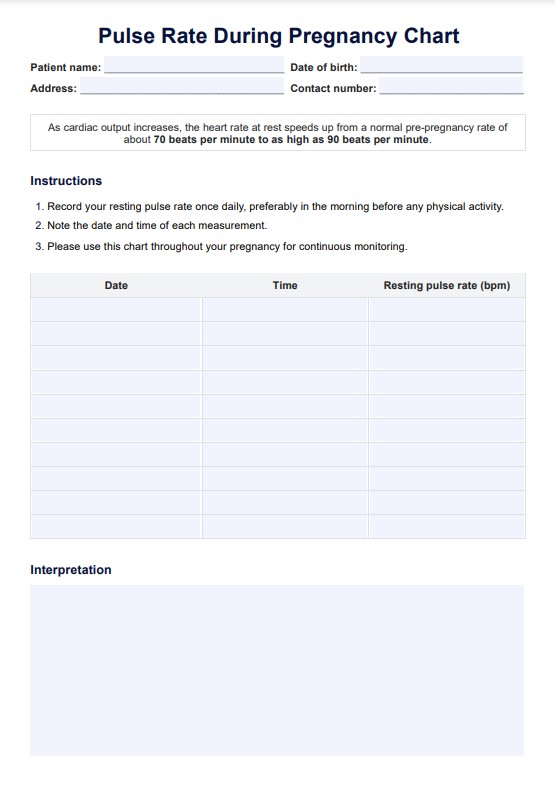Obstetricians, midwives, and maternal-fetal specialists typically request a Pulse Rate During Pregnancy Chart to monitor heart rate during pregnancy. These charts help track the resting heart rate of pregnant people, identify abnormal heart rates, and ensure maternal and baby health is maintained throughout the pregnancy.

Pulse Rate During Pregnancy
Optimize maternal health with our Pulse Rate During Pregnancy Chart. Track daily pulse rates seamlessly, ensuring a healthy pregnancy journey.
Pulse Rate During Pregnancy Template
Commonly asked questions
This chart is used throughout pregnancy, especially during regular prenatal checkups and fetal heart rate monitoring to ensure a normal fetal heart rate. It is critical in the third trimester, when the heart rate increases, to support the baby’s growth, helping detect any abnormal patterns that could indicate health risks.
Pregnant people record their resting heart rate daily using the chart. Healthcare providers review these records during prenatal appointments to track trends and identify any abnormal heart rate increases. This monitoring helps detect potential issues early, allowing for timely interventions to safeguard the baby's health.
EHR and practice management software
Get started for free
*No credit card required
Free
$0/usd
Unlimited clients
Telehealth
1GB of storage
Client portal text
Automated billing and online payments











